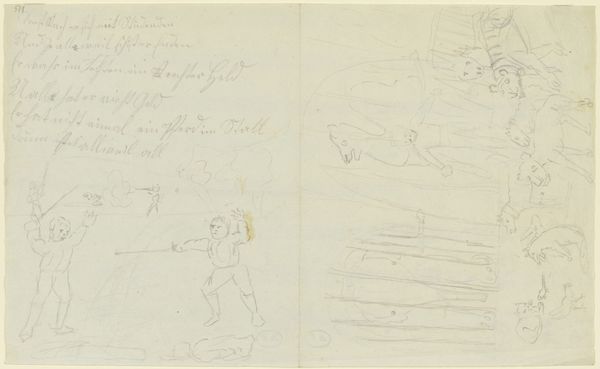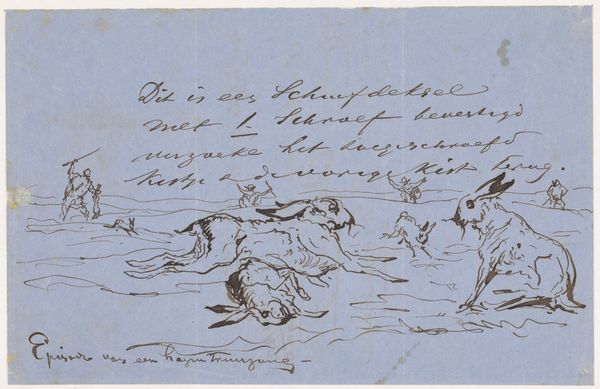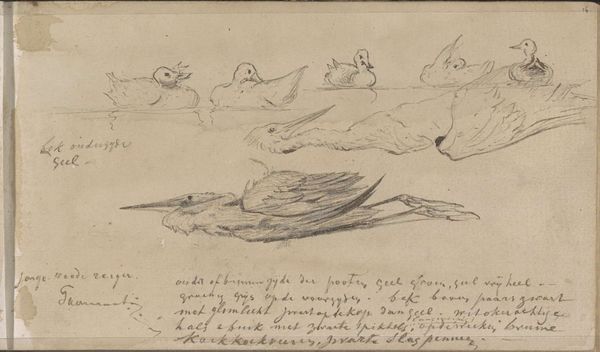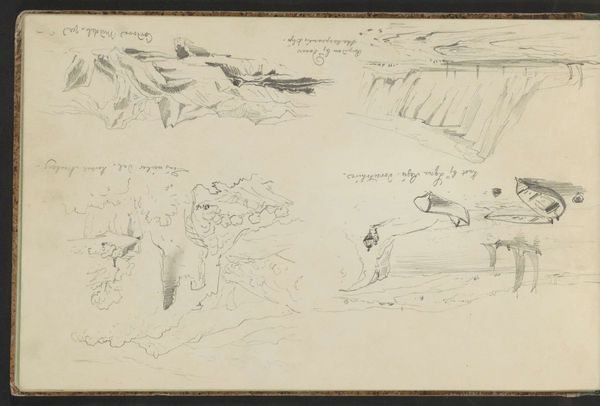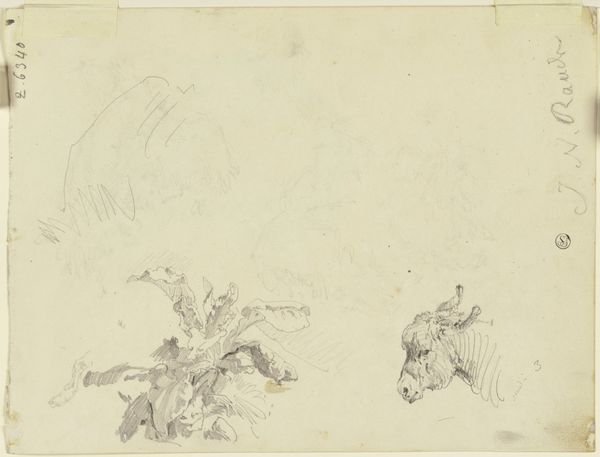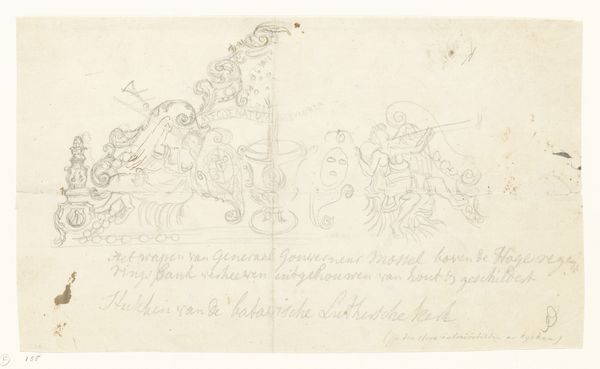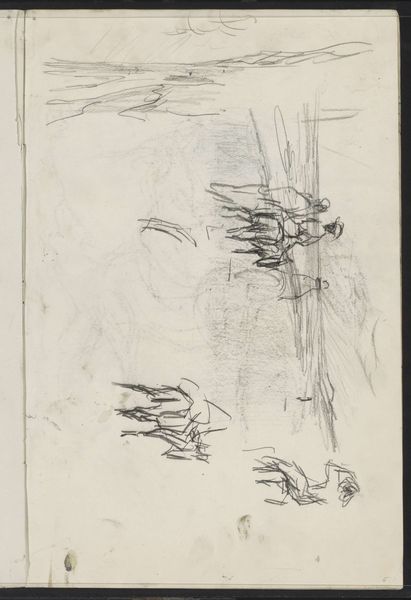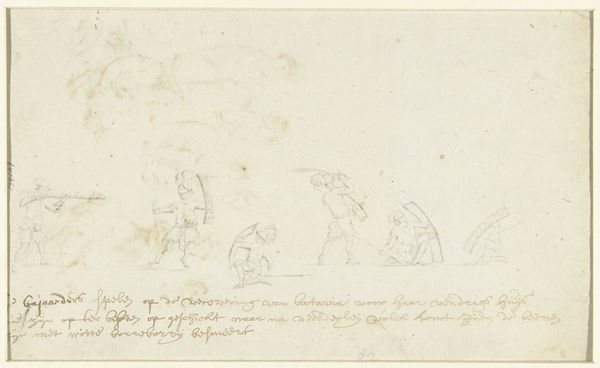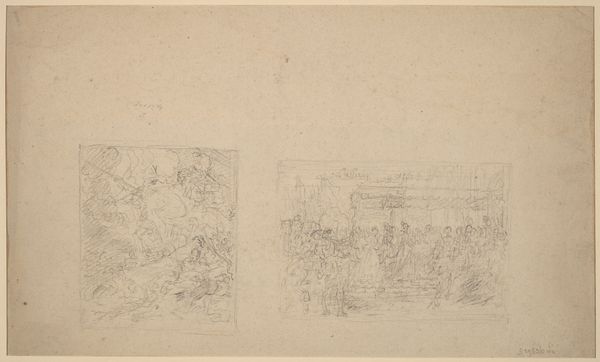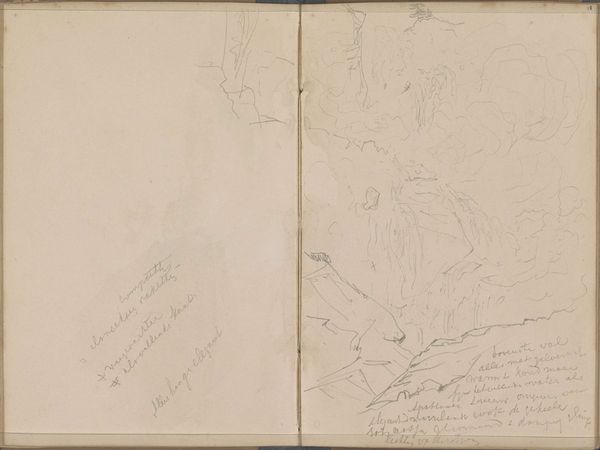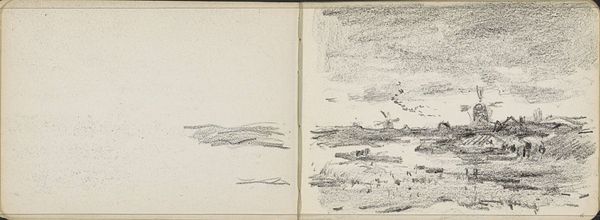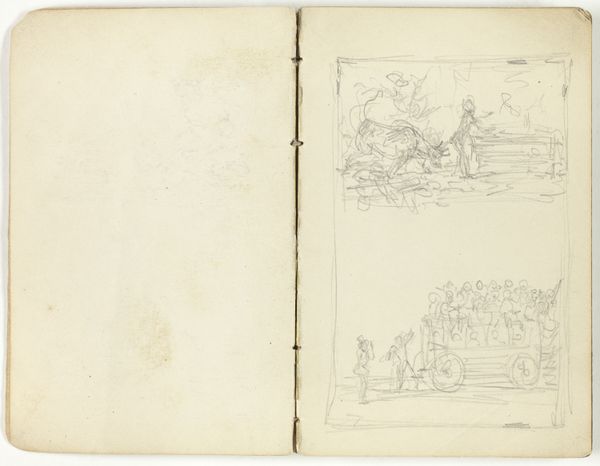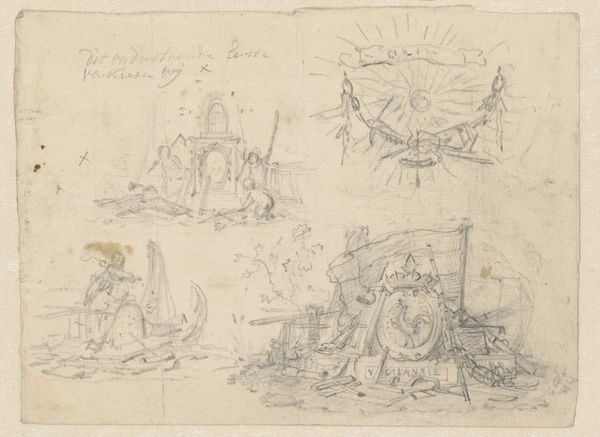
Dimensions: 8 1/8 x 10 5/8 in. (20.6 x 27.0 cm)
Copyright: Public Domain
Curator: Here we have Rosa Bonheur's "Illustrated Letter to M. Roland," created sometime between 1840 and 1899. It's a charming example of her lesser-known work, composed of ink on paper and currently residing at the Metropolitan Museum of Art. Editor: My first impression is that it's delightfully chaotic. The energy practically leaps off the page! It's small in scale, but manages to pack a humorous punch. What story is unfolding here? Curator: Indeed, it offers a window into Bonheur's world, her relationships. On one side, there’s a handwritten letter, and opposite, a series of lively sketches illustrating—humorously, I imagine—the woes of artistic creation. It reveals the daily struggles an artist must have, always exposed to the hazards of exterior settings. Editor: It’s tempting to interpret those scenes as allegorical. Is this Bonheur’s symbolic portrayal of the artistic struggle, battling the elements, both literal and metaphorical? Or is it literally just a sketch that illustrates challenges when working outside, that may disrupt concentration and peace while one engages the environment with an open mind and eyes? Curator: Perhaps both! Bonheur certainly infused her animal paintings with symbolic weight, so it wouldn’t be out of character. She may want to offer an archetypal representation of art in the context of a broader world, as reflected, for example, in Romanticist aesthetics and thinking. At the very least, it reveals a lighthearted side to Bonheur that contrasts with the gravitas of her more famous canvases. Editor: Absolutely. The composition reminds me of satirical prints popular at the time—like something out of Daumier’s studio. There is definitely a sense of caricature, a commentary of sorts of Bonheur herself! Even down to the self-deprecating humor with someone clearly suffering for their art. I see some cultural history present in those pen strokes. It gives this object more depth as a social document. Curator: Precisely. We see her engaging with, and perhaps poking fun at, the Romantic ideal of the suffering artist, struggling heroically against the odds. A brilliant illustration, to that effect. The images here serve a didactic purpose that goes far beyond what’s on the surface, perhaps all the way to the author. Editor: Ultimately, this illustrated letter transcends a simple personal note; it stands as a commentary on the artistic condition and the artist's resilience, rendered with humor and grace, in what can only be an inspiring account to contemporary viewers and creators. Curator: Agreed. It's a gem that humanizes Bonheur, reminding us that even great artists face daily absurdities. A precious visual record of both Bonheur and art’s intrinsic relationship to broader human endeavours, I’d argue.
Comments
No comments
Be the first to comment and join the conversation on the ultimate creative platform.
